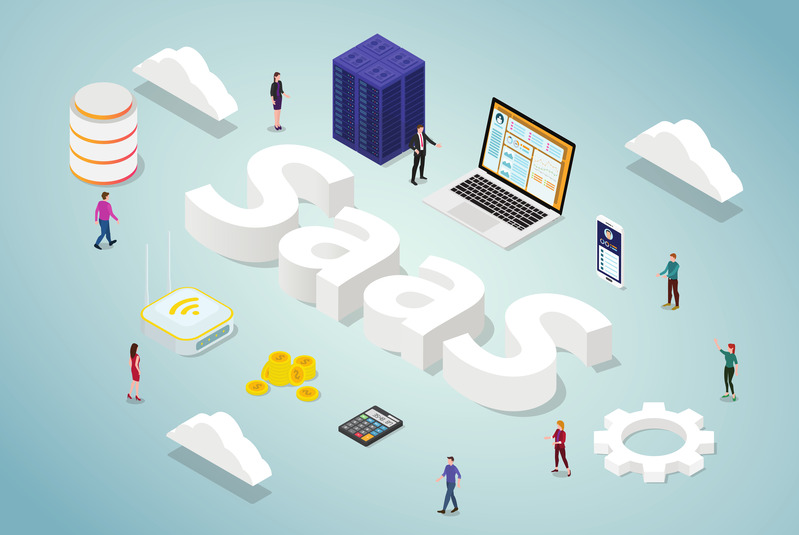Figuring out how to price your SaaS product requires as much work and finesse to put a price tag on it, especially if you are a startup trying to gain a foothold in the SaaS landscape. Furthermore, you need to be prepared to increase your prices as and when your business expands.
Our article helps you navigate the intricacies of SaaS pricing, its importance, and the various ways to do it.
What is SaaS Pricing & What is Its Significance?
SaaS pricing is a pricing model where customers pay on a subscription basis to use your software for their purposes. Check more on SaaS subscription management software (https://www.togai.com/solutions/pricing-model/subscription-management/) right here.
Generally, the price of a SaaS product relies on three aspects:
- Revenue objectives
- Target markets
- Marketing strategy
When considering the purchase of a SaaS product, the price can often be the determining factor. In such cases, an attractive pricing model can prove to be a valuable asset for you and your customers.
However, here’s where the challenge lies. Price your SaaS product too high and your customers will quickly leave you for an alternative. Price it too low and you will not reap adequate revenue to keep your company afloat.
From the customer’s perspective, the pricing is all about how much value your SaaS product brings to the table, or the Cost-to-Value ratio. Ultimately, you want your customers to feel that their decision to buy your SaaS product was totally worth it.
Therefore, choosing a pricing model that offers the best value for the cost will help you become a viable competitor in the market. To achieve this, you need to know how to do it- which is what our next segment explores.
3 Best Practices to Get Your SaaS Pricing Right
Strategy 1: Include all your costs without depreciating your value.
The initial pricing strategy you choose will guide future pricing adjustments as you learn from your customer base. You need to understand your:
- Market condition.
- Billing cycles
- Product’s value to customers
- Competitor, target audience, and customer segments
- Customer Acquisition Costs
- Customer Lifetime Value
Strategy 2: Always consider the Freemium strategy.
Freemium- a combination of Free and Premium is popular amongst SaaS companies for two reasons:
- It highlights your presence in big enterprises.
- It helps you penetrate the market even if you are new to the landscape.
In Freemium, customers can use the basic features for free, but to enjoy the advanced features, they need to pay a subscription fee. For customers, freemium allows them to test the waters without any risk of losing money. However, from a business perspective, you may lose money if your customers do not find your product enticing enough to move to a paid plan. Hence, caution is needed.
Strategy 3: Keep on testing and improving your pricing.
You may not master SaaS pricing right away, but that’s okay. As you gain more customers and better understand their needs, it’s important to continually test and refine your pricing strategy. Conduct surveys with your existing customers to gain deeper insights into features or use cases. These insights will help you scale and grow your business more effectively.
Apart from these strategies, an important part of pricing your SaaS product is understanding the basic pricing strategies, as explained by Togai, a leading metering and billing platform platform for B2B SaaS businesses.

5 SaaS Pricing Strategies For Startups To Win the Pricing Game
1. Cost-based pricing
Cost-based pricing is one of the most basic strategies that takes into account the total costs of creating a product or service, such as:
- Product development
- Employee salaries
This value is increased with a specific percentage to ensure a proper ROI for the product. The simplest example is to set a price of $130 for software that costs you $100 to create, thereby generating a profit of 30%.
Pros of cost-based pricing
It is simple, easy to understand and implement. There’s less intricacy involved, which makes it all the more feasible for startups.
Cons of cost-based pricing
- Cost and revenue prediction is not always accurate.
- Your initial estimates may go wrong midway, and you may not recover your expenses.
- This pricing strategy does not take your competitor’s pricing into consideration. Hence, there’s no way of knowing where your pricing stands.
2. Competitor Pricing
As the name suggests, this pricing strategy uses your competitor’s pricing as the benchmark and sets a higher, lower, or the same price. For SaaS startups yet to penetrate and capture the market share, competitor pricing is a valuable strategy.
If you are using a new software and are unsure about the costs involved in providing the service, you can get help from your competitors’ pricing strategy. This will help you determine the appropriate price points for your product. By doing so, you can avoid setting the prices too high, which may scare away potential customers, or too low, which may make them question the value of your product.
Pros of competitor pricing
It’s the easiest to implement. All you need to do is find your competitor’s price and fix your price point accordingly.
Cons of competitor pricing
- The pricing strategy is not unique to your company.
- Sometimes, your competitor may fix a high price for their offerings because they believe it is the best in the market. This benchmark may not suit you.
Penetration Pricing
Penetration pricing is a promotional pricing strategy where you reduce your initial price point to generate demand in the market. This pricing strategy gives you control over how long customers can enjoy this exclusive offer. You can fix a designated time frame and choose whether to keep your customers informed or not.
Let’s say your product’s initial pricing is $100. You can offer a limited 50% discount to the first 200 customers, thereby generating interest and demand for your product.
The limited time frame creates a sense of urgency, which can work in your favor, especially if your offer is more attractive than that of your customers.
Penetration pricing is not ideal for the long run for the following reasons:
- It may wrongly portray that your product is struggling to gain a foothold, in which case customers may start questioning its value.
- Continuous use of the model may make users hesitant to upgrade to a higher price point.
Therefore, penetration pricing should only be used as a precursor to establish a stronger pricing strategy.
4. Value-based pricing
Value-based pricing is all about pricing your product based on how much your target audience values them. In this strategy, the entire focus is on how much your audience wants from your product rather than considering your competitor’s prices or company expenses.
When your customers truly comprehend the worth of your service and are willing to pay for it, you have the opportunity to charge a premium price. This not only generates more revenue for your business but also allows you to re-evaluate your pricing strategy in the future, should you need to modify or update your service. By offering a valuable service that customers are willing to pay for, you can establish a strong and sustainable business model.
Is value-based pricing suitable for you?
Value–based pricing is the toughest one to implement because it needs a lot of preliminary groundwork to understand your target customers and set the right price.
Pros of value-based pricing
- Better understanding of your customer base.
- Direct interaction to cultivate a meaningful relationship with your customer base.
Cons of value-based pricing
If not rightly done, value-based pricing can impact your bottom line and increase your customer churn.
5. Freemium Pricing
Freemium pricing is essentially free+ premium, a strategy where you offer a free and limited version of the product to rope in more customers. Although the free version can be used for an extended period, advanced features are typically restricted unless the user upgrades to a paid subscription.
Freemium pricing pros
It is a commonly used and easier method to win over customers.
It helps you get your product across to a wider customer base.
Freemium pricing cons
Customers can get used to the free product and refuse to upgrade to the paid plans.
If your paid offer has too many features, it may annoy your customers.
Wrapping Up
The most effective SaaS pricing depends on:
- Initial pricing model
- Higher value in product offerings
- Your company growth
- How customers have changed
The important objective is to evaluate how you can increase revenue with your product by increasing the prices, reaching out to more prominent clients, or modifying your offerings. Do that, and you can achieve success.




